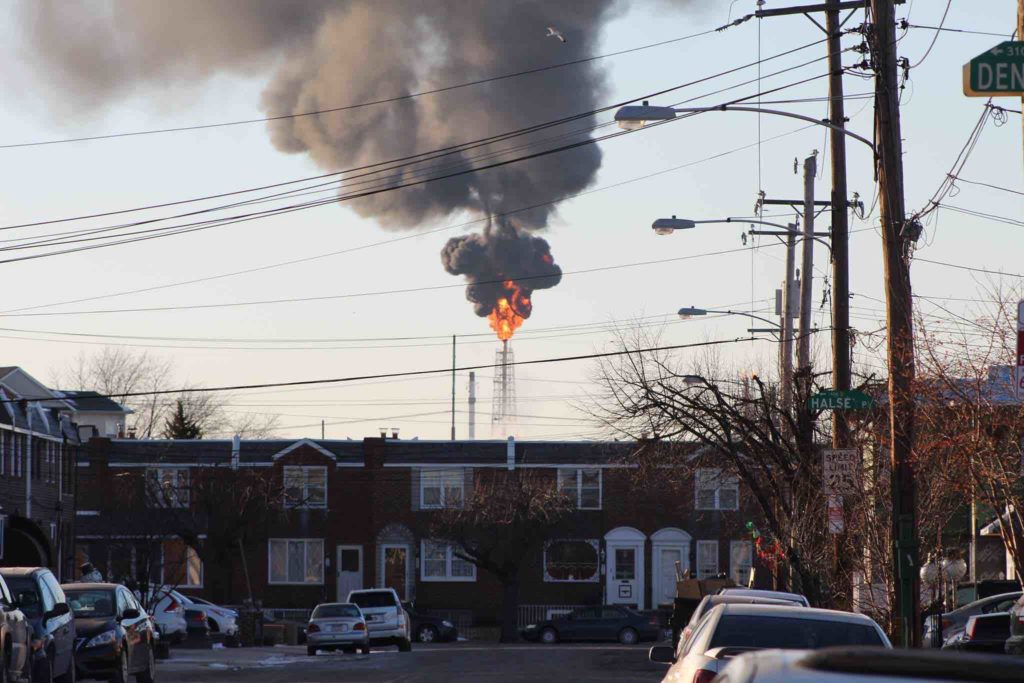New Report Shows How Methane Pollution Threatens African American Communities

Incident at the Philadelphia Energy Solutions refinery in Southwest Philadelphia. Source: AverageSculler via Reddit
As the nation’s second-largest natural gas producing state, Pennsylvania must take the lead in protecting our public health and natural resources from the dangers of methane pollution. Methane, the primary component of natural gas, is a potent greenhouse gas, nearly 87 times more powerful than carbon dioxide at driving climate change over a 20-year timeline; it also contributes to ozone smog formation, which exacerbates asthma symptoms and can trigger attacks. We know that the oil and gas industry represents the largest source of methane emissions – not just in Pennsylvania – but across the United States. Each year, industry operators dump 9 million tons of methane and other toxic pollutants like benzene into our air.
Methane pollution from the industry affects all Pennsylvanians, but new analysis shows these impacts are not evenly distributed. The NAACP and Clean Air Task Force have just released a new study, titled “Fumes Across the Fence-Line,” that details the disproportionate health impacts on low-income communities and communities of color caused by pollution from oil and gas facilities. Over one million African Americans live within a half-mile of these facilities and that number is growing every year; over one million African Americans also live in counties that face a cancer risk above EPA’s level of concern from toxins emitted by natural gas facilities — and that number, too, is growing every year.
In Pennsylvania alone, over 79,000 African Americans live within a half-mile of an oil and gas facility. Additionally, African Americans make up nearly 40% of Pennsylvanians who live in counties with oil refineries, despite African Americans representing less than 12% of Pennsylvania’s total population. “Fumes Across the Fence-Line” features an alarming case study highlighting the severe impacts felt by African Americans who live in the same South Philadelphia neighborhood as Philadelphia Energy Solutions (PES), the largest fossil fuel refinery on the East Coast and one of the oldest in the world. PES alone contributes 72% of the toxic air emissions from stationary sources in Philadelphia, where the childhood asthma rate is over twice as high as the national average.
Despite these alarming statistics, we must remember that many proven, low-cost technologies and practices are available to reduce methane emissions from oil and gas facilities. In 2016, the Obama administration finalized strong methane standards that cover new and modified facilities, and Pennsylvania has been working for over two years to finalize its own commonsense standards for new and modified facilities. Yet even the federal standards are now under attack by Scott Pruitt and Donald Trump, and nothing is being done at either the federal or state level to address methane emissions from existing sources, which are responsible for the pollution Pennsylvania families live with each and every day.

Source: “Gasping for Breath,” US Census Bureau
Studies like “Fumes Across the Fence-Line” serve as an important reminder that we must not roll back the commonsense protections already in place, and we must move forward and require pollution reductions from all oil and gas facilities. This will benefit all Pennsylvanians but, in particular, it will save lives in those families who face disproportionate exposure to methane pollution.

